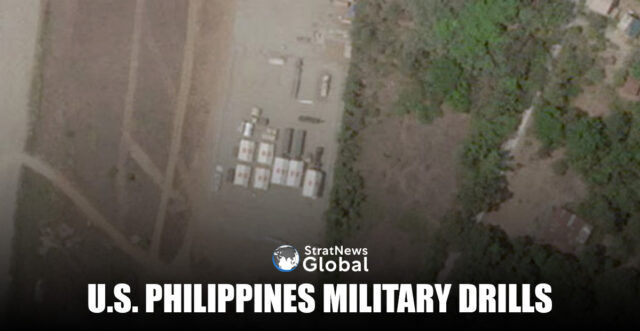U.S.-Philippine military exercises are longstanding, “purely defensive,” and aimed at maintaining force readiness and ensuring regional security, a U.S. State Department spokesperson stated on Saturday.
The spokesperson was responding in an email to a request for comment after China’s defence ministry urged Manila on Friday to withdraw U.S. Typhon intermediate-range missiles.
The Typhon launchers, part of a U.S. drive to amass an arsenal of anti-ship weapons in Asia, can fire multipurpose missiles distances of up to thousands of kilometres.
Deployments Responsive To Growing Threats
Temporary deployments of U.S. missile capabilities in the Philippines are responsive to growing threats, intended to maintain force readiness and to preserve regional security and stability for all, the spokesperson said.
“These U.S. systems are designed to be conventionally armed and are not designed to employ nuclear payloads,” the spokesperson said.
‘Strategic Offensive Weapon’
Beijing has deployed ballistic medium and intermediate-range missiles that can cover up to 3,000 km (1,800 miles), or 5,000 km, including dual-capable ones for nuclear and conventional use, and is developing and deploying more such systems, the spokesperson said.
China’s defence ministry accused the Philippines of breaking promises by introducing the missile system, which it called a “strategic offensive weapon”.
The Philippines said the Typhon missile system was only meant for defence and that the Southeast Asian nation had never promised to withdraw it.
The Tomahawk cruise missiles in the launchers can hit targets in China or Russia from the Philippines, while the SM-6 missiles it also carries can strike air or sea targets more than 200 km (120 miles) away.
Rubio, Manalo Munich Talks
U.S. Secretary of State Marco Rubio and Philippine Foreign Minister Enrique Manalo, in a meeting in Munich on Friday, discussed bilateral coordination in the South China Sea and increasing economic cooperation, the State Department said.
“Secretary Rubio not only reaffirmed U.S. commitment to the United States-Philippines Alliance, but noted his enthusiasm for building an even more invested and enduring relationship,” State Department spokesperson Tammy Bruce said in a statement.
(With inputs from Reuters)





